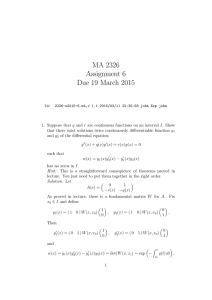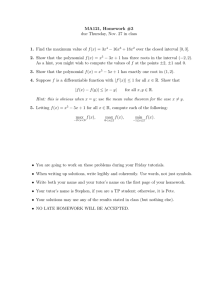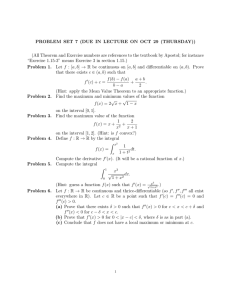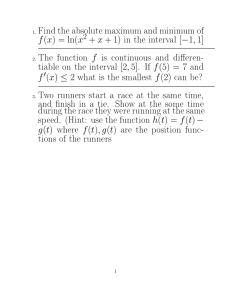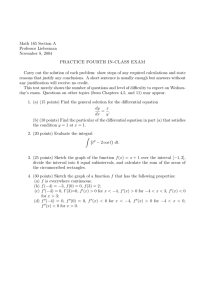MA 2326 Assignment 6 Due 19 March 2015
advertisement
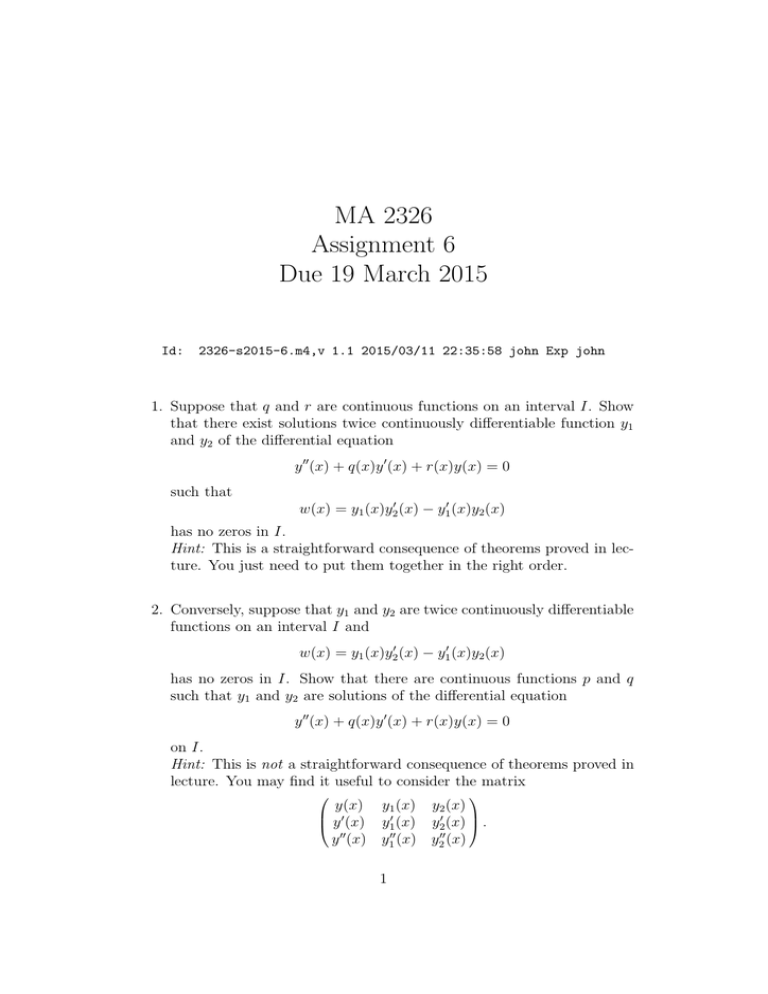
MA 2326 Assignment 6 Due 19 March 2015 Id: 2326-s2015-6.m4,v 1.1 2015/03/11 22:35:58 john Exp john 1. Suppose that q and r are continuous functions on an interval I. Show that there exist solutions twice continuously differentiable function y1 and y2 of the differential equation y ′′(x) + q(x)y ′(x) + r(x)y(x) = 0 such that w(x) = y1 (x)y2′ (x) − y1′ (x)y2 (x) has no zeros in I. Hint: This is a straightforward consequence of theorems proved in lecture. You just need to put them together in the right order. 2. Conversely, suppose that y1 and y2 are twice continuously differentiable functions on an interval I and w(x) = y1 (x)y2′ (x) − y1′ (x)y2 (x) has no zeros in I. Show that there are continuous functions p and q such that y1 and y2 are solutions of the differential equation y ′′(x) + q(x)y ′(x) + r(x)y(x) = 0 on I. Hint: This is not a straightforward consequence of theorems proved in lecture. You may find it useful to consider the matrix y(x) y1 (x) y2 (x) ′ y (x) y1′ (x) y2′ (x) . y ′′(x) y1′′ (x) y2′′ (x) 1 Id: 2326-s2015-6.m4,v 1.1 2015/03/11 22:35:58 john Exp john 2 3. The second Painlevé equation is y ′′(x) = 2y(x)2 + xy(x) + α. α is a parameter. (a) Show that for any α, x0 , y0 and v0 the equation has a unique maximally extended solution with initial conditions y(x0 ) = y0 , y ′ (x0 ) = v0 . Hint: This is a straightforward consequence of theorems proved in the notes. (b) Show if a maximally extended solution and its derivative are bounded then its interval of definition is all of R. Hint: The easiest way to do this is to assume a bound and an interval of definition and then use the quantitative version of the existence theorem, Theorem 6 of Chapter 1 of the notes, to derive a contradiction. Use the explicit form of the differential equation as little as possible.
